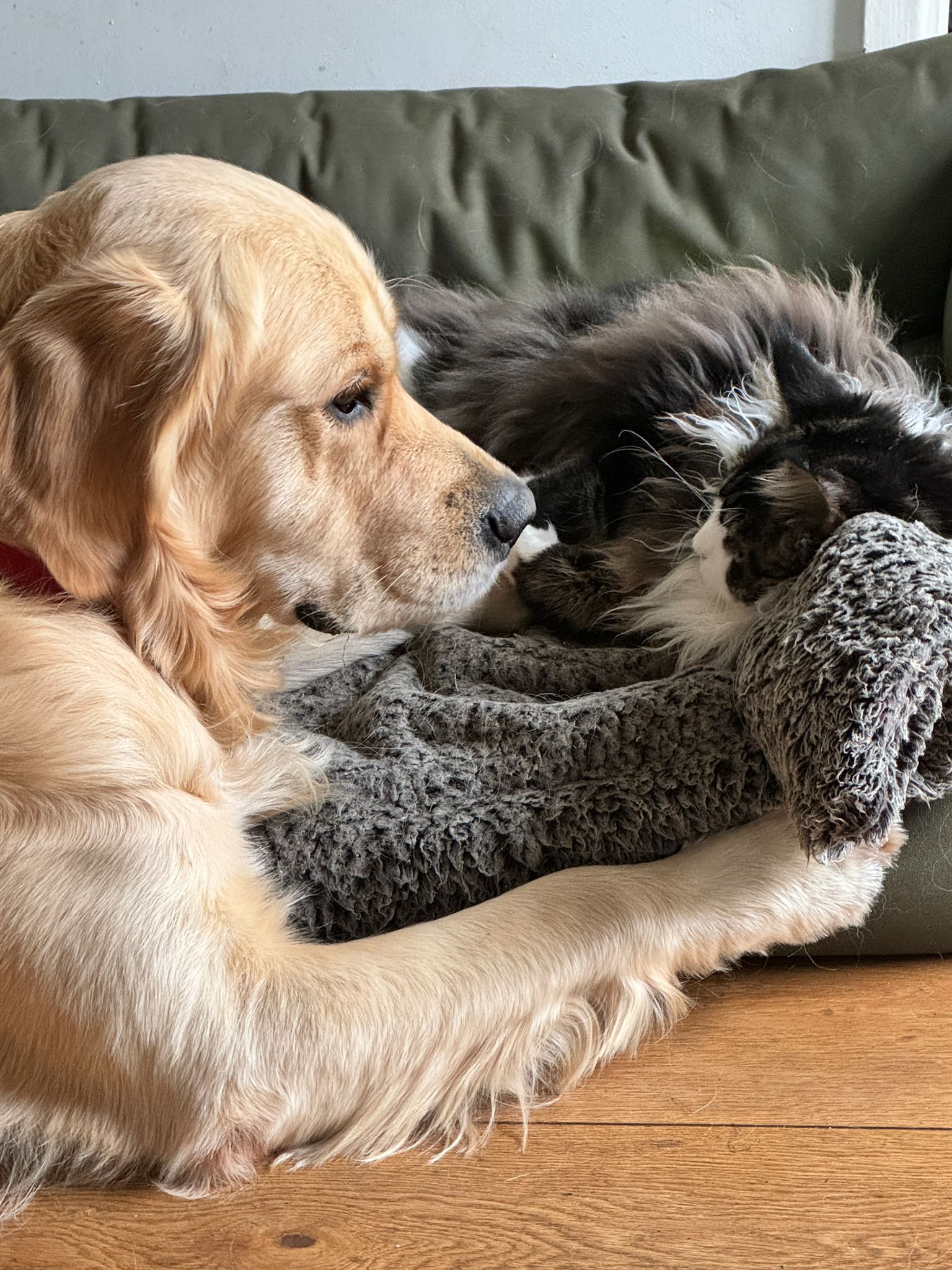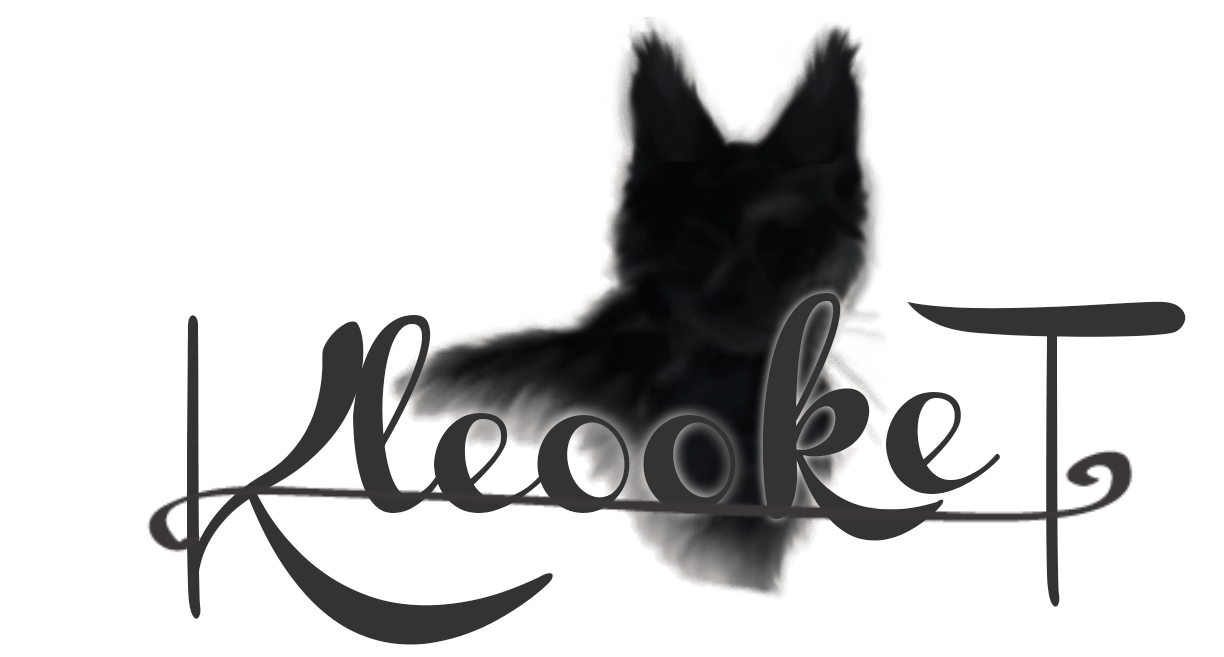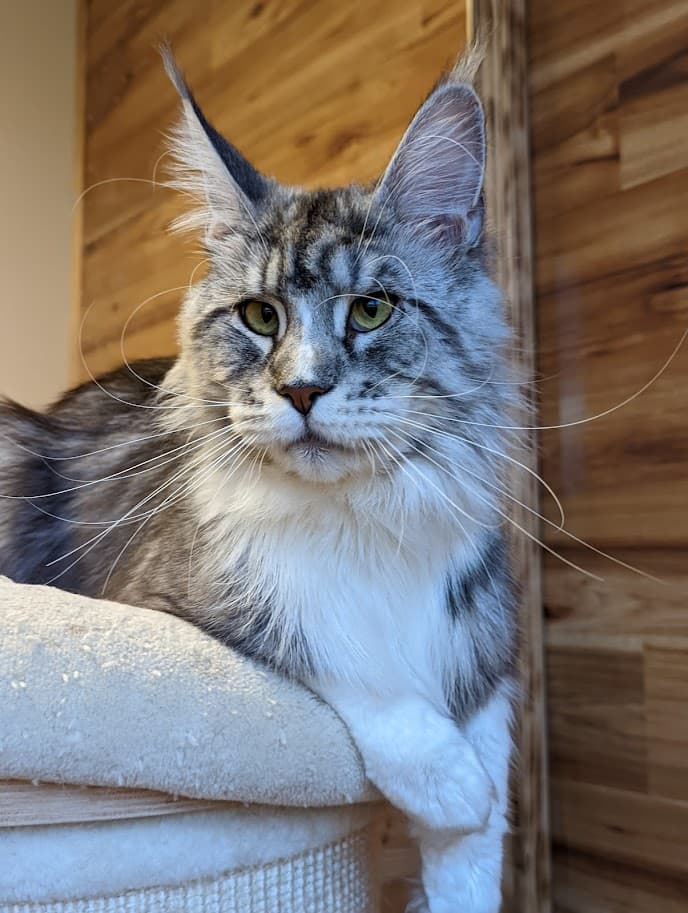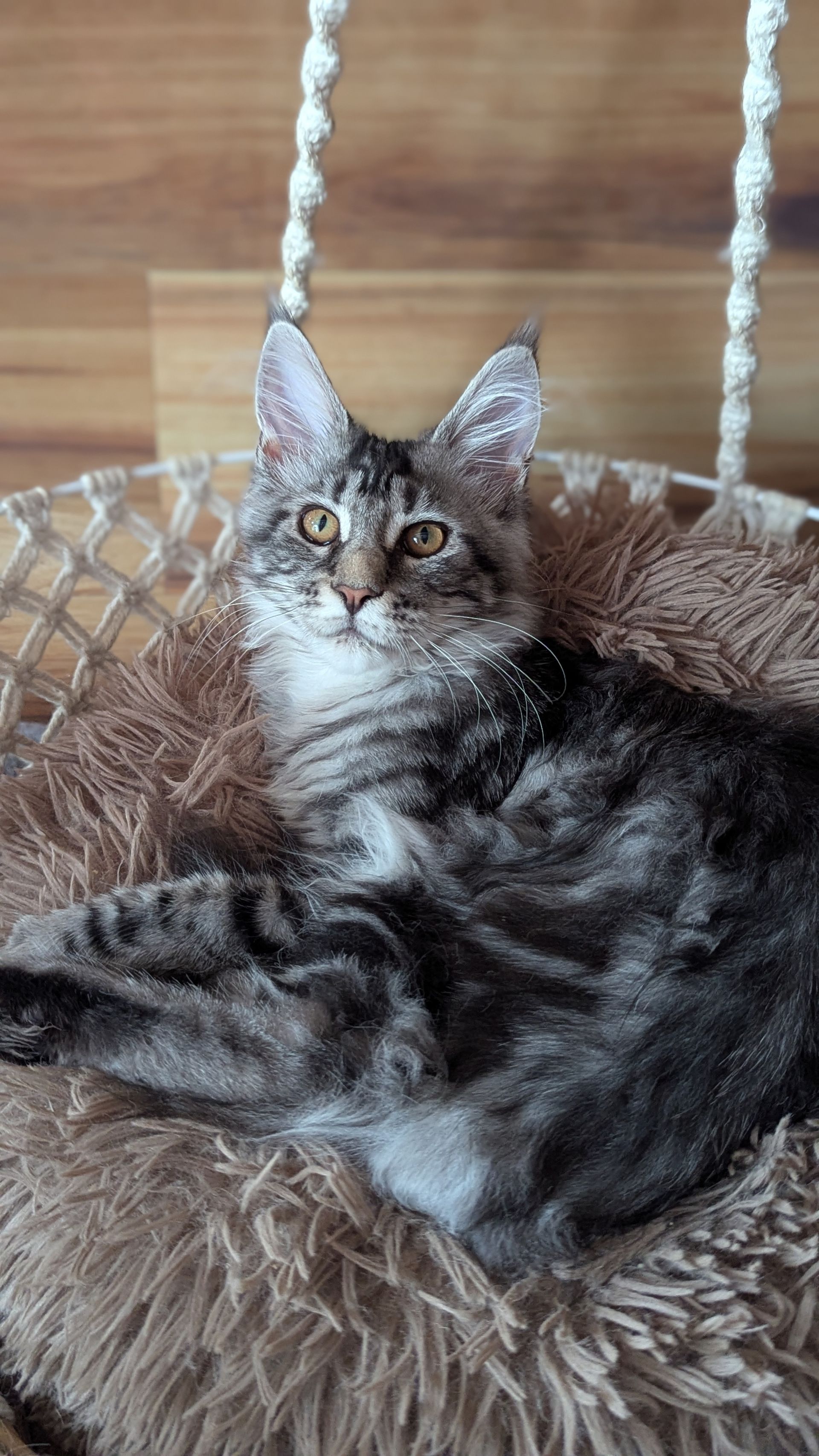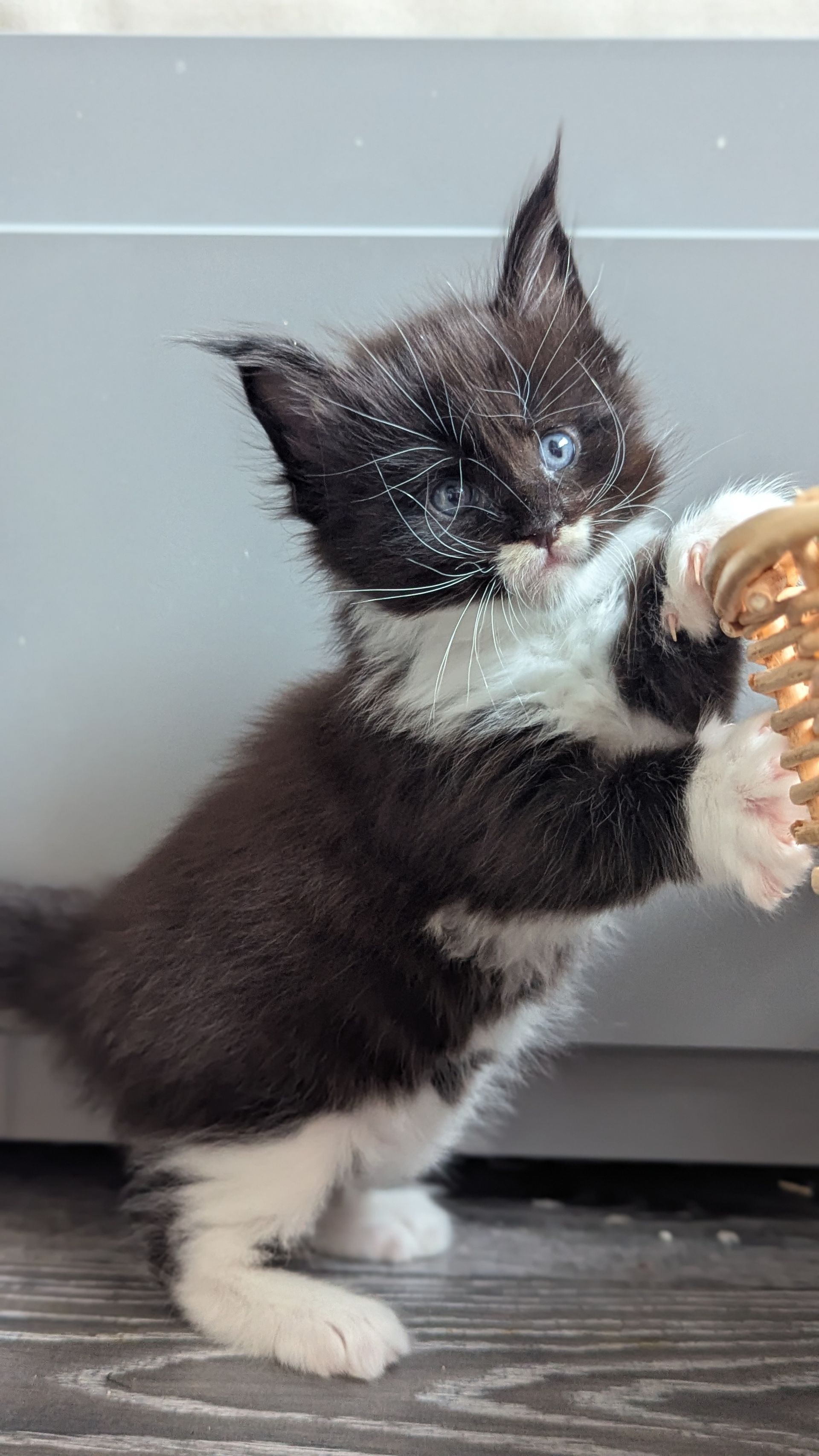Breed
The Maine Coon breed appeared in the nineteenth century in the United States, but it received official recognition only in 1950. Cats of this breed are smart and charming. These qualities in her are loved and appreciated by her owners. That is why, in just forty years, Maine Coons have gained great popularity not only in the USA, but also in Europe: in the 1990s, representatives of this breed were most often registered in the unified LOOF pedigree registry. Cats were originally used in the US to catch rats. Maine Coons could easily cope with large rodents, thanks to their power and hunting streak. Long-term exposure to a harsh climate has shaped the Maine Coon's good coat. For the first time, Maine Coons were presented at an exhibition in 1861, but subsequently they were undeservedly forgotten for a century. In 1976, the cat breeders' associations in the United States officially recognized the Maine Coon standard. In 2000, these animals became the second most popular CFA longhair cat. Germany was one of the first countries in Europe to become interested in Maine Coons, after which France joined. In 1981, the first thoroughbred Maine Coons set foot on French soil: a black and white cat and a pair of cats - silver and brown striped beauties.
Legend of Maine Coons
The Maine Coon is the largest known cat breed. Legend has it that the breed originated from the mating of Maine wildcats in the United States with raccoons. However, scientists smash this legend to smithereens, citing a strong argument: the chromosomes of the two animal species are incompatible. A more plausible version explains the appearance of Maine Coons as a result of crossing semi-wild cats of this region with Angora cats, which Europeans brought with them to the United States: a ship called "May Flower" anchored off the coast of Massachusetts. The cat owners then moved north with their pets to Maine, which borders Quebec. It is interesting to note that the settlers mistook raccoons living in these parts for local wild cats. This fact formed the basis of the legend due to the similarity of the fluffy powerful tail of Maine Coons and raccoons. Genetically, Maine Coons are European long-haired cats with thick tails, brought to the United States during colonization and trade.
In the future, their appearance was formed under the influence of the northern climate of Maine. Only the most hardy survived: large, powerful animals with a thick coat. The bristles under the paws allowed the Maine Coons to walk on the snow. A wool collar around the neck helped to keep warm. The fluffy tail made it possible to hide the muzzle from the cold during sleep. Similar traits to Norwegian cats (which is why Maine Coons are sometimes called Viking pets) are not due to selection, but to evolutionary changes to withstand harsh environmental conditions. It turns out that Maine Coons evolved through nature's "own" breeding program, developing their body characteristics, following the "survival of the fittest" evolution.
О породе
Порода мейн-кунов появилась в девятнадцатом веке в США, но официальное признание она получила лишь с 1950 года. Кошки этой породы умны и очаровательны. Эти качества в ней любят и ценят ее владельцы. Именно поэтому всего за сорок лет мейн-куны получили большую популярность не только в США, но и Европе: в 1990-ых годах представителей этой породы чаще всех регистрировали в едином реестре родословных LOOF.
Первоначально кошек использовали в США для ловли крыс. Мейн-куны легко могли справиться с крупными грызунами, благодаря своей мощи и охотничьей жилке. Длительное воздействие сурового климата сформировало у мейн-кунов хорошую шерсть. Впервые мейн-куны были представлены на выставке в 1861 году, однако впоследствии были незаслуженно забыты на век. В 1976 году ассоциации заводчиков кошек в США официально признали стандарт мейн-кунов. В 2000 году эти животные стали второй по популярности длинношерстной кошкой CFA. Одной из первых стран в Европе мейн-кунами заинтересовалась Германия, после – присоединилась Франция. В 1981 году на французскую землю ступили первые породистые мейн-куны: черно-белый кот и пара кошек – серебристая и коричневая полосатые красавицы.
Легенда о Мейн Кунах
Мейн-кун – это самая крупная из известных пород кошек. Легенда гласит, что эта порода появилась в результате спаривания диких кошек штата Мэн в США с енотами. Однако ученые разбивают эту легенду в пух и прах, приводя веский аргумент: хромосомы двух видов животных несовместимы. Более правдоподобная версия объясняет появление мейн-кунов в результате скрещивания полудиких кошек этого региона с ангорскими котами, которых с собой привезли в США европейцы: корабль под названием «May Flower» бросил якорь у берегов Массачусетса. Затем владельцы кошек со своими питомцами двинулись на север, в штат Мэн, который граничит с Квебеком. Интересно отметить, что поселенцы приняли за местных диких кошек обитающих в этих краях енотов. Этот факт и лег в основу легенды по причине сходства пушистого мощного хвоста мейн-кунов и енотов. Генетически же мейн-куны представляют собой европейских длинношерстых кошек с густыми хвостами, завезенных в США во время колонизации и торговли. В дальнейшем их внешний вид формировался под влиянием северного климата штата Мэн. Выжили только самые выносливые: с густым шерстяным покровом крупные мощные животные. Щетина под лапами позволяла мейн-кунам идти по снегу. Шерстяной воротник на шее помогал согреться. Пушистый хвост давал возможность спрятать морду от холода во время сна. Схожие черты с норвежскими кошками (из-за чего иногда мейн-кунов называют питомцами викингов) обусловлены не селекцией, а эволюционными изменениями, позволяющими противостоять суровым условиям окружающей среды. Выходит, что мейн-куны эволюционировали через «собственную» программу разведения природы, развивая характеристики своего тела, следуя эволюции «выживания наиболее приспособленны
